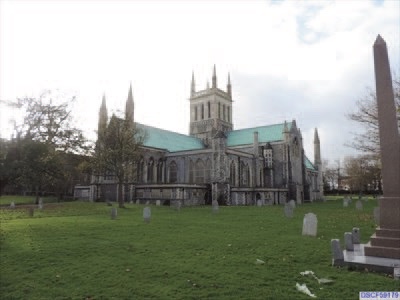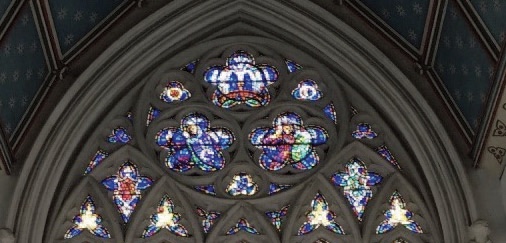In August while on a Norfolk Broads holiday, we came across an exceptionally large church in Great Yarmouth. It intrigued me as the name on the notice board was Great Yarmouth Minster, curiosity got the better of me and I went in with two of the grandchildren.

A helpful guide explained some of the history of the building and referred to the extensive bomb damage during the 2nd World War and the fact it was rebuilt in the 1960’s before being re-consecrated in 1961. He then posed a challenge for us to find “Donald Duck.” Off we went expecting to find a drawing or sculpture, but we had to admit defeat until the guide showed us a stained-glass window at the very top of which appeared to sit the famous duck. It is not known if this was a deliberate act by the makers of the window or a coincidence—take your pick!

St Nicholas’ Church and Priory was founded by Herbert de Losinga (Bishop of Norwich) in 1101 as a penance for selling pardons etc. It is the third largest church by floor area in the country behind Beverley Minster and Christchurch Priory in Dorset and is arguably the oldest building in Great Yarmouth. Anna Sewell the author of Black Beauty was born in the house adjacent to what is now the Minster.
But why is it referred to as a Minster? The Church Of England decided in the 20th century and beyond to nominate a number of former parish churches as Minsters and on 9 December 2011 the Lord Bishop of Norwich designated St Nicholas Church, Great Yarmouth a Minster Church. From then on, its official title is The Minster Church of St Nicholas.
John Sinclair
